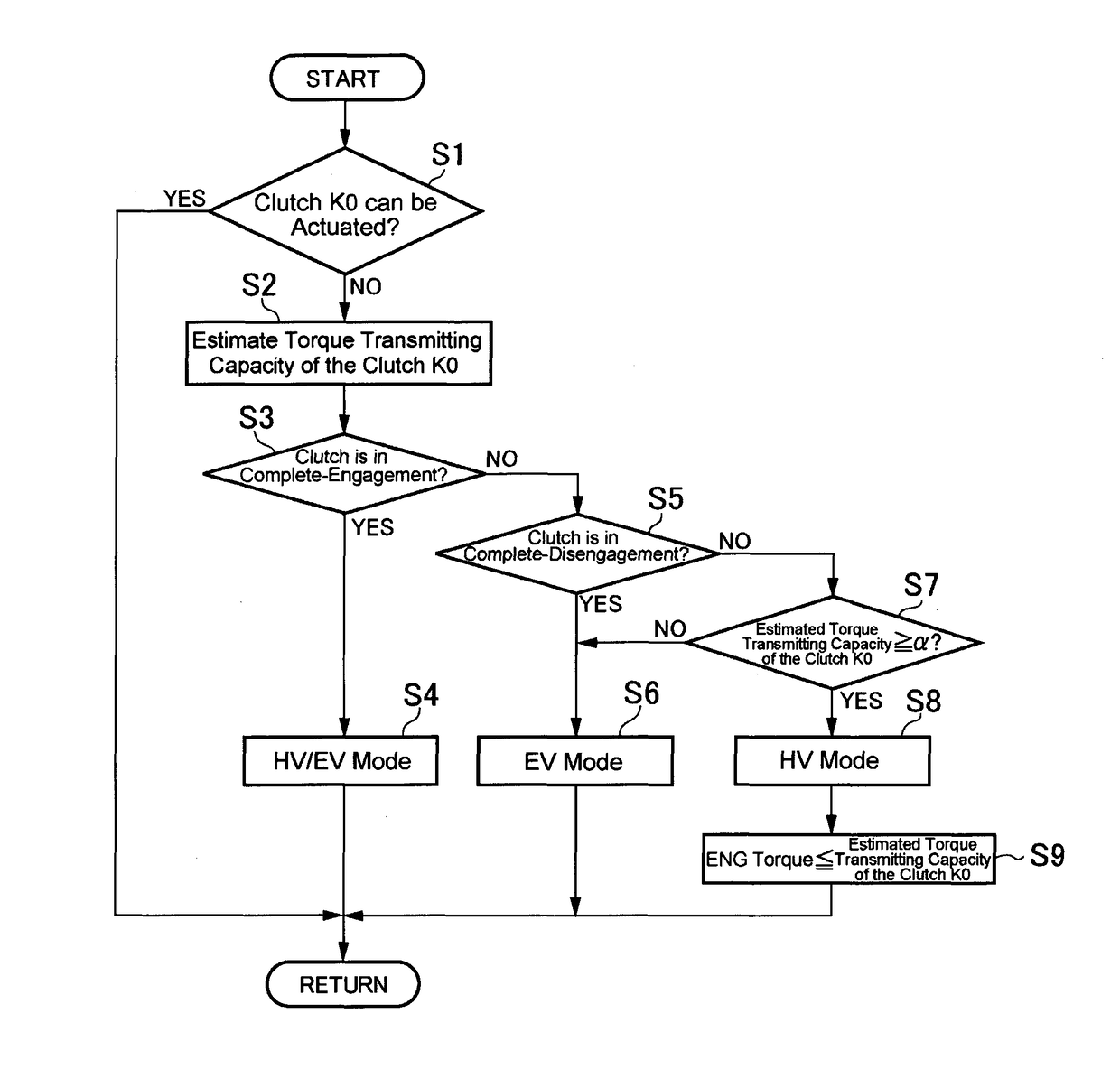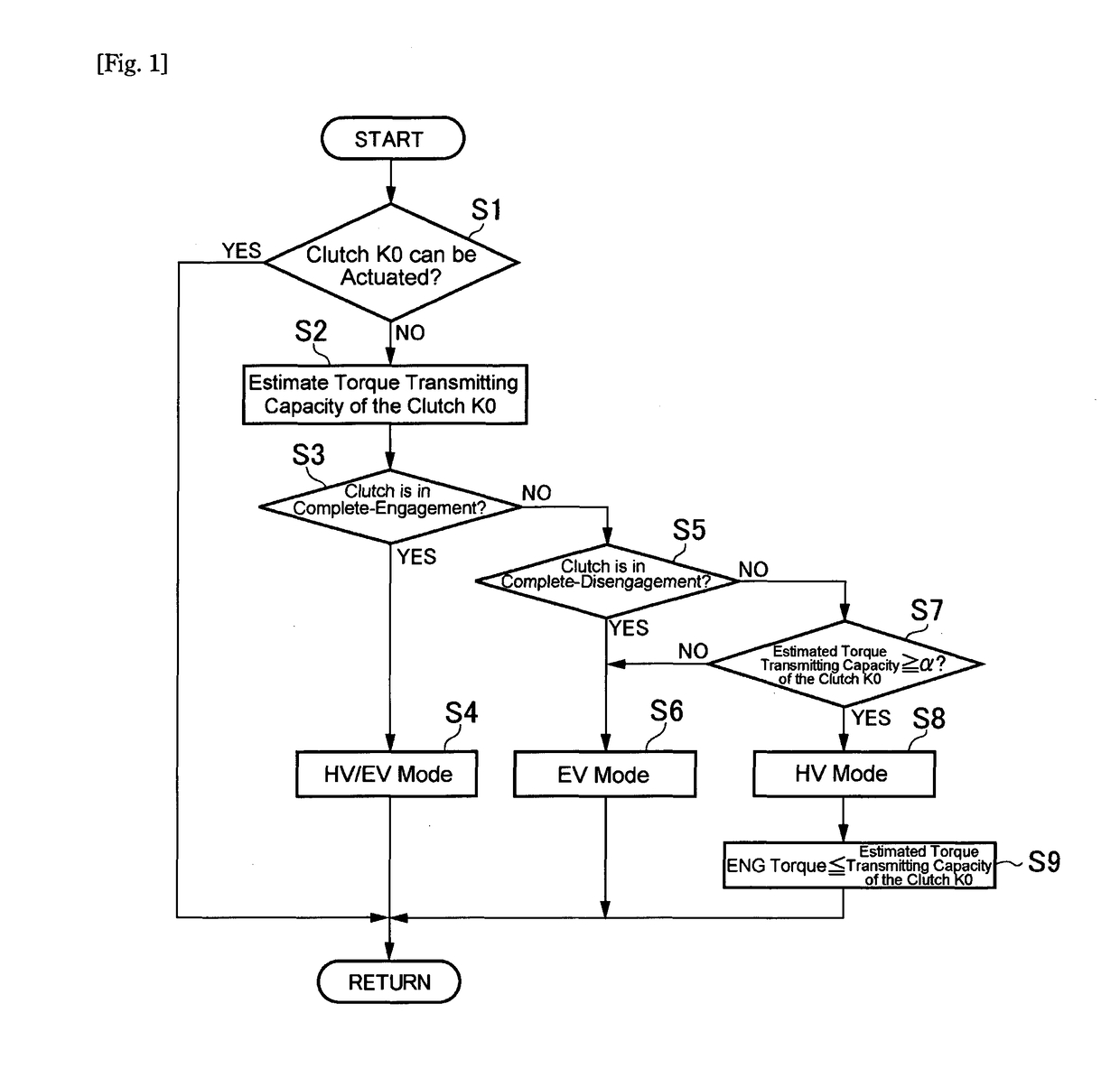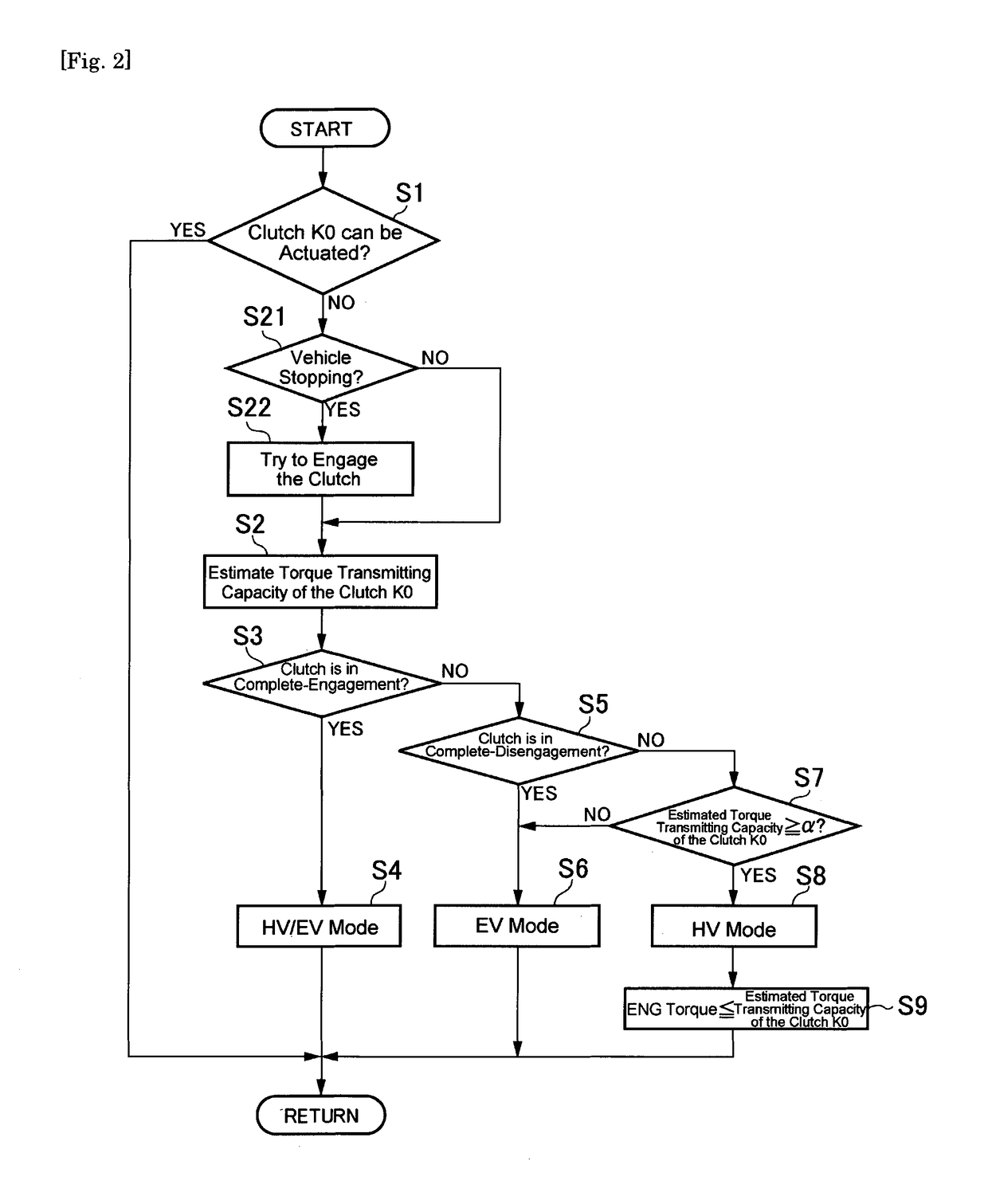Control system for hybrid vehicle
a control system and hybrid technology, applied in the direction of engine-driven generators, transportation and packaging, etc., can solve the problems of increasing electric consumption, reducing the cruising distance in the motor running mode, and causing power loss to passively rotate the engine, so as to achieve sufficient driving force and braking force, without consuming electricity, and without worsening the slippage of the engagement device in trouble.
- Summary
- Abstract
- Description
- Claims
- Application Information
AI Technical Summary
Benefits of technology
Problems solved by technology
Method used
Image
Examples
Embodiment Construction
[0031]The vehicle control system of preferred embodiment is applied to a vehicle having an engine and a motor each generating torque to transmit to driving wheels, and an engagement device that interrupts the torque transmissions both between the engine and the motor and between the engine and the driving wheels by disengaging. A preferred example of the vehicle to which the preferred embodiment is applied is illustrated in FIG. 4. The vehicle shown in FIG. 4 is a hybrid vehicle comprised of an engine (ENG) 1, and motors 2 (MG1) and 3 (MG2). The vehicle shown in FIG. 4 can be driven not only by the engine 1 but also by a combination of the engine 1 and the motor 2 (3). In addition, the vehicle can also be driven only by the motor 3. The motor 2 and 3 are adapted to regenerate energy while the vehicle is running. When the vehicle is driven by the motor 3, the engine 1 is allowed to be stopped and restarted. Under EV mode in which the motor 3 is used as a prime mover for driving the v...
PUM
 Login to View More
Login to View More Abstract
Description
Claims
Application Information
 Login to View More
Login to View More - R&D
- Intellectual Property
- Life Sciences
- Materials
- Tech Scout
- Unparalleled Data Quality
- Higher Quality Content
- 60% Fewer Hallucinations
Browse by: Latest US Patents, China's latest patents, Technical Efficacy Thesaurus, Application Domain, Technology Topic, Popular Technical Reports.
© 2025 PatSnap. All rights reserved.Legal|Privacy policy|Modern Slavery Act Transparency Statement|Sitemap|About US| Contact US: help@patsnap.com



